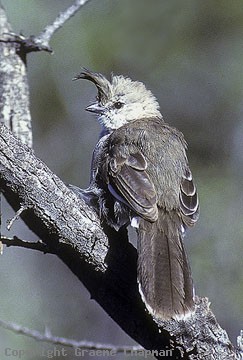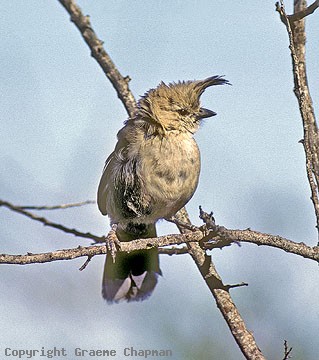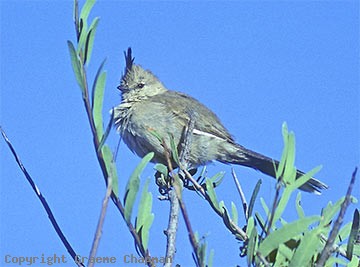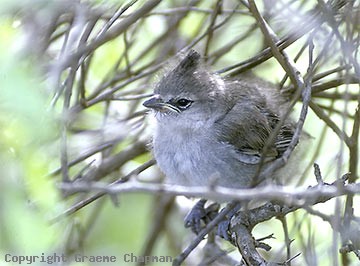Australian Birds
Chiming Wedgebill
Psophodes occidentalis
(Viewing 4 of 6 photos)
|

The two species of Wedgebill are so similar in appearance that they were still regarded as one as late as 1973. Identifying them on plumage alone is extremely difficult and the best reference in this regard is HANZAB (Handbook of Aust. NZ & Antarctic Birds). Basically the Chiming occurs in the west (of Aust.) and the Chirruping in the east but both species occur in S.A. and far W Qld - fortunately their ranges barely overlap in the northern Simpson Desert and near Oodnadatta, so on the whole which bird you are watching is dictated by where you are watching it.
More importantly, their songs are quite different and sufficient to make an identification although there are some birds from far NE South Australia that sing apparently intermediate songs which merit further investigation (see info. on sound). The two wedgebills are both classed together with the whipbirds in the genus Psophodes, the members of which are all crested, all lay blue eggs and their songs are often sung as a duet by male and female. Chirruping Wedgebills are birds of dry, open country with low scattered shrubs. Lignum and saltbush surrounding inland lakes are particularly favoured. Chiming Wedgebills prefer much denser shrubland - they are quite common in W.A., particularly in the coastal shrublands between Shark Bay and Carnarvon. Adult wedgebills appear to occupy permanent territories because they occur in the same places year after year. Little is known about their life histories, but younger birds (distinguished by an orange bill pic 866207) do form flocks of up to 100 or so and presumably wander further afield depending on the season.
|

865201 ... Chiming Wedgebill, Shark Bay,W.A. |

865202 ... Chiming Wedgebill |
 |

865203 ... Chiming Wedgebill |

865204 ... Chiming Wedgebill, fledgling. |
 |
Previous 1 2 Next
Return to Photo Library page









